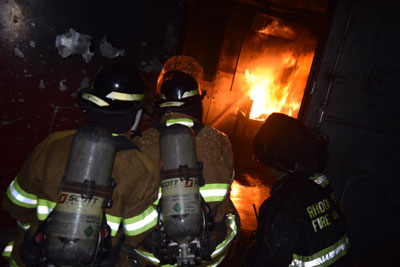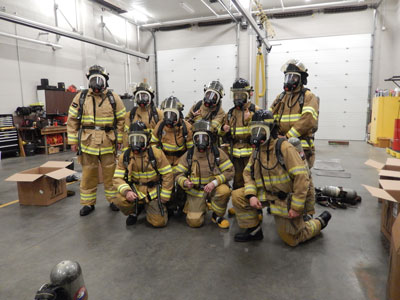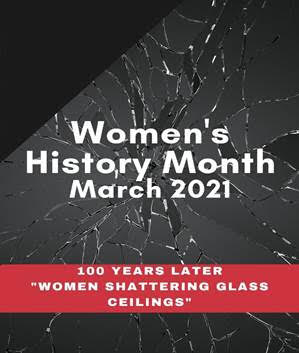Good afternoon, fellow NOAA Corps officers,
This edition of CPC's Cyberflash is a rather full one and I encourage everyone to review the contents and take advantage of the many resources available to us as commissioned officers. This is an exciting time of year as we approach promotion board season. I also recognize that this can be a very stressful time as well. With that, I will continue to emphasize the importance of self care and mental health 'breaks' in our everyday lives. Taking a walk on the fantail or grabbing a cup of coffee at an FBO can pay massive dividends for our general daily outlook and I hope everyone reading this can find some time to just breathe. Following that is a call to look out for each other as well - be the officer who recommends stepping back for a minute to (safely) disengage from daily activities. It is critical that we model the behavior we want to see in others and lead by example. In doing so, we will foster a healthier and happier NOAA Corps and one that is ready to serve NOAA and the Nation.
On a separate note, and as a follow-up to my message earlier in the week regarding promotion packages, I would like to say that everything is still on track and moving through the appropriate offices as necessary. I will update everyone again when the time comes and hope to err on the side of over communication when it comes to promotion status. Aside from the obvious perks that come with an increase in salary, moving to the next higher grade is an affirmation that the hard work and dedication you have shown are being recognized by the agency and that the future remains bright. I am optimistic that these packages will route swifty and hope to share the good news of when the first round of officers will be able to pin-on their new ranks as soon as possible.
Stay healthy,

CDR Douglas MacIntyre, NOAA
Director, Commissioned Personnel Center
| 25 Mar 2021 | OCS 2-21/BOTC 137 Billet Night |
| Late Mar 2021 | Command Advisory Board |
| Early Apr 2021 | Officer Assignment Board |
| RADM Michael Silah | 01 Apr 2021 |
| CDR Paul Kunicki | 01 May 2021 |
| LTJG Lyle Robbins | 01 May 2021 |
| LTJG Sarah Donohoe | 25 Jun 2021 |
| LTJG Tyler Fifield | 30 Jun 2021 |
| RDML Shepard Smith | 01 Jul 2021 |
| LT Calandria DeCastro | 01 Jul 2021 |
| LT Michael Silagi | 01 Aug 2021 |
 BOTC 137 poses after donning their turnout gear.
BOTC 137 poses after donning their turnout gear.
|
 Members of BOTC 137 work to extinguish a fire in the burn building at the Rhode Island Fire Academy.
Members of BOTC 137 work to extinguish a fire in the burn building at the Rhode Island Fire Academy.
|
BOTC 137 was busy last week spending back-to-back days at the Rhode Island Fire Academy for Basic and Advanced Fire Fighting practical field exercises. At the beginning of this week, BOTC 137/OCS 2-21 earned the Senior Status stage of the program after completing a grueling 12 hour "Ready for Sea" day that began at 0400 and tested the students' abilities in 4 different areas (Knowledge, Physical Fitness, Survival at Sea, and Teamwork).
Morale is high as the students prepare to set sail on the USCGC Eagle on Monday for a two week training cruise. Upon arriving back to New London, BOTC 137 and their USCG shipmates will face their toughest academic challenge to date, Rules of the Road (ROTR) week. They will have the always exciting Billet Night on March 25th. A live stream link will be sent out in the days prior to the event.

The Department of Commerce is proud to join the nation in recognizing National Women's History Month (NWHM). Observed annually in March, NWHM is a time to reflect upon and celebrate the remarkable role of women in our nation's history.
The Department of Commerce theme for 2021 is:
Women's History Month had its origins as a national celebration in 1981 when Congress passed Pub. L. 97-28 which authorized and requested the President to proclaim the week beginning March 7, 1982 as "Women's History Week." In 1987, after being petitioned by the National Women’s History Project, Congress passed Pub. L. 100-9 which designated the month of March as "Women's History Month." To read President Biden's invitation to the Nation to honor the history and achievements of women and girls, please click here.
Throughout the month of March, Commerce bureaus and offices will be hosting events designed to commemorate Women's History Month. Your participation and support for these events is highly encouraged!
While all OMAO employees who observe or receive a report of sexual assault or sexual harassment are highly encouraged to respond appropriately and report the incident or allegation in a timely manner, supervisors are required to respond and report. This includes all NOAA Corps officers and any Professional Mariners permanently or temporarily serving in the position of Commanding Officer, Executive Officer, or Chief Engineer.
Ensure complainant is safe.
Inform complainant of your obligation to report the incident.
Advise complainant of Equal Employment Opportunity (EEO) rights.
Notify complainant of the availability of support services.
Report incident to immediate chain of Command and Human Resources.
In all cases, notification of incidents will be made through the chain of Command to the Deputy Director, OMAO within 72 hours.
Harassment, bullying, and intimidating behavior will not be tolerated. Let's continue to work together to make OMAO a respectful workplace.
Do you ever wonder what NOAA Corps workforce planning is?
Workforce planning is providing measurements to justify, and defend the number of spaces (officers) needed to operate NOAA’s fleet of ships and aircraft, to include rotational assignments in fixed shore duty between operational tours. By tying in the costs per officer we have the means to qualify resources, typically funding, in providing products, and services.
Also included in workforce planning is maintaining and sustaining the strength of the NOAA Corps using historical information in gains (accession) and loses (attrition) to fill probable future needs.
There are many techniques used in industrial engineering to determine how many people are needed to perform a function. NOAA Corps uses Operational Rotation Tempo (ORT) that includes sea-shore rotation and aviation-shore rotation, plus Relocation, Development, and Support (RDS) for calculating this number. Using time-motion factors, we can estimate the full complement needed for the fleet. Finding the optimum number is achievable, but it is contingent upon resource availability.
Other techniques include, time-motion studies that measure how long it takes to perform a function, how often the function is performed to fully perform the function over a set period of time. For instance it takes more time and resources to cut a lawn twice a week than once a week. Consideration is also given to equipment wear and tear. Depending on the standard expected in maintaining a lawn, the impact is about workload and resources.
Factors included in the task are direct and indirect workload. Work that impacts the creation of a product, or delivery of a service are considered as direct workload. Time that is related to self-improvement, supervisory tasks, leave, clean-up, and movement between assignments are considered indirect work. Indirect workload is work that is not directly related to the creation or completion of a product or service, but is necessary. ORT is the direct workload, with RDS as the indirect workload. In the example of cutting a lawn, the mowing is the direct workload, while the act of storing the lawn mower is the indirect workload.
The ORT factor is determined by adding the length of a sea duty assignment with the shore based assignment and divide that sum by the length of the sea duty assignment. Knowing the number of officers needed to safely operate the ship(s), we multiply that number by the ORT factor to find out how many officers are needed in support of the direct workload of ship(s) operations. For a sea tour length of 2 years, and a shore assignment of 3 years, the ORT factor would be 2.5. For each space aboard a ship, we would need 2.5 officers; 1 aboard ship with 1.5 officers productively available for shore assignments. Since we can’t have half an officer, the total would be rounded up to 3. Note that for a second officer aboard the ship we would not need 6 officers since the factor provides a whole number of 5 officers for the ORT factor of 2.5.
The RDS factor uses months in computing the length of the sea or aviator tour and adds an additional month, 2 months, or 3 months, and divides the sum by the length of the sea or aviator tour length. For a 2 year tour, we would use 24 months plus the additional RDS month(s) in determining the factor. The RDS factor is than multiplied by the ORT results to determine the overall number of officers required. For a 2 year sea assignment with 1 month of RDS, the RDS factor would be 25 divided by 24, or 1.042. You would then multiply the ORT by the RDS to get your total requirements. In the case of 2 mariners aboard a ship the ORT is 5, plus the ORT multiplied by 1.042 for a total of 5.21 rounded up for a total requirement of 6 officers.
With the known number of spaces required, the next step is to qualify the spaces. For NOAA Corps this means grade distribution from O1 to O6. Grade distribution is based on percentages assigned to each grade for officers in the grades O1 to O6. The results provide the maximum allowable officers required for each grade. In order to maintain those grade levels, we look to average attrition and accession rates to figure out the number of officers needed to meet grade strength attrite. The estimation is intended to fill future gaps, otherwise we may have gaps in place that may be unfilled until the next Officer Career Management Plan (OCMP) is completed, and promotions are approved.
Growing the NOAA Corps, to meet its fleet requirements, means attempting to counter probable attrition. Knowing how many officers is required is only the first part of growing the NOAA Corps. Resources are needed in order grow that include funding as well as inventory, or candidates, inter-service transfers, or direct appointments also known as the faces. By being able to defend, justify the need, and having a plan in place to manage growth, we stand a better chance of receiving what is required to provide products, and services.
The essence is that workforce planning uses historical information to calculate, and justify future year needs that are defendable in requesting future year resources to perform the mission.
I hope this helps provide insight into NOAA Corps workforce planning.
The current medical readiness extension will end on March 31st. If you have yet to complete all your requirements by the time the extension is lifted because your local area still feels unsafe or you have problems with scheduling appointments, please contact us. These are unprecedented times and we will work with officers on a case by case basis. At current time, MA do not foresee providing an extension for medical requirements beyond March 31st.
Please know, that MA is working hard to review and update medical readiness. We know there has been a huge delay this past year and ask that you try to refrain from submitting documentation more than once. If you have a question regarding medical readiness documents being received and updated, please just email us and we will look for the documentation and respond accordingly.
Medical Affairs continues to standby for updated information regarding vaccine acquisition for NOAA Corps officers.
In the meantime, we encourage all officers to obtain vaccines through the best avenue available to them, MTF's, state or local programs, or community programs.
Some NOAA Corps officers have successfully completed the COVID vaccine series of 2 doses. Please ensure you upload a copy of your vaccine card to your eOPF once series is completed.
We do not endorse one vaccine over another, all three vaccines approved for use (Moderna, Pfizer, and now Johnson & Johnson) are considered safe.
Medical Affairs would like to bring attention to a useful resource available to NOAA Corps officers who are struggling to navigate PCS-ing, returning from deployment, or preparing to leave the service.
Run out of the Psychological Health Center of Excellence, the 'in Transition' program assigns a 'coach' who acts as a case manager of sorts for people who are finding the processes overwhelming and it is having an impact on their mental wellness.
As always, reach out to Medical Affairs if you have any questions.
W2:
W2's have been mailed to all NOAA Corps Officers and mailed to the most up to date address they have listed in Direct Access. If you have not received your W2, Please use the Direct Access Self Service to print your W2 form.
To access W2's please login to DA and click VIEW/PRINT MY W-2 in self Service. Print the W-2 for the year you need.
If the box worded something like, (
Leave Chits:
Note: Enter your zip code to your leave address when submitting leave chits. Direct Access will not accept the leave chits, if there is no zip code in the address.
Per NOAA Corps directives Chapter 12, the standard ODU ball cap shall be ODU blue in color with the text "NOAA CORPS" embroidered in 1/2 inch gold block caps in an arch shape centered on the front. There shall be enough space below to accommodate appropriate rank insignia placement. Unit ball caps may be worn with the unit name in 1/2 inch embroidered gold block caps in place of "NOAA CORPS" arranged in the same arch manner on the front. The unit hull/tail number may be embroidered in 1/4 inch gold block caps below the unit name provided there is still adequate space for proper rank insignia placement. Insignia shall be placed on the centerline spaced evenly between the unit/NOAA CORPS text and hull/tail numbers if applicable.
References: NCD Chapter 12, Part 4 Appendix 1 item 4.09, 12 Part 5 Appendix 1 item 5.11, Sections 12601 C2, 12602 D3